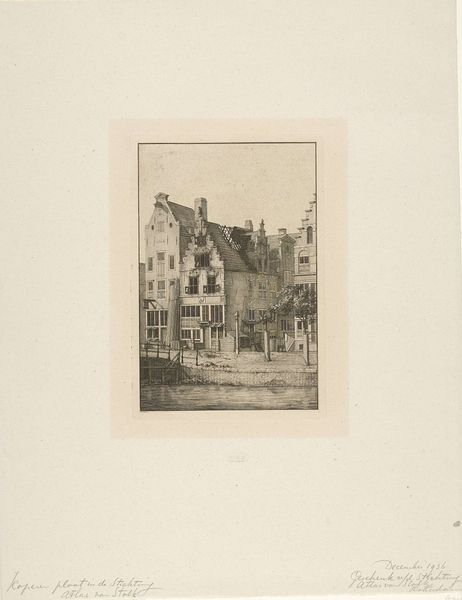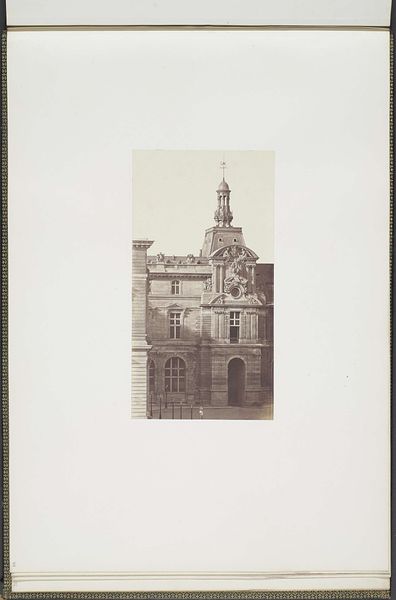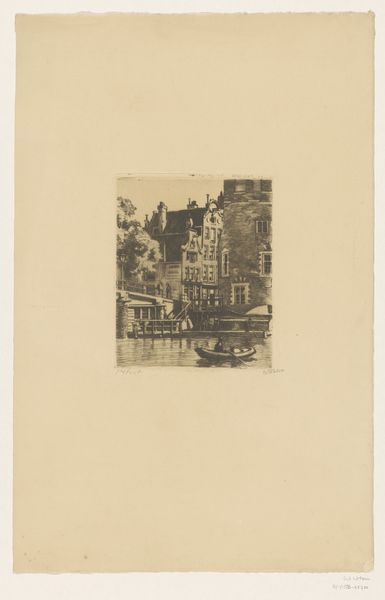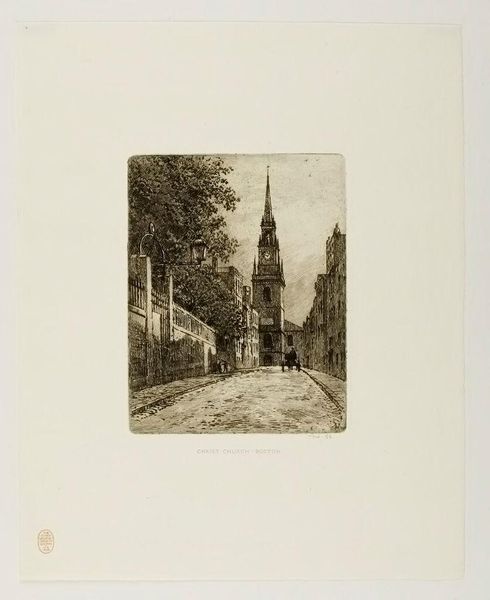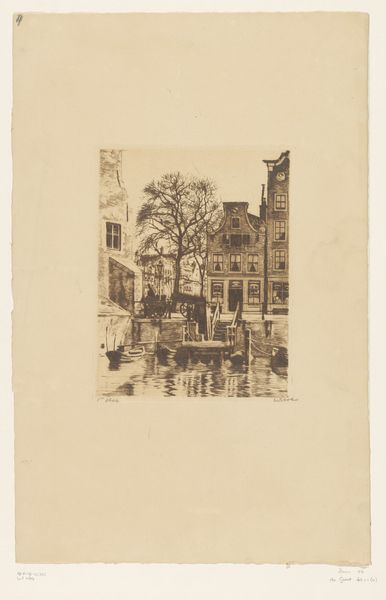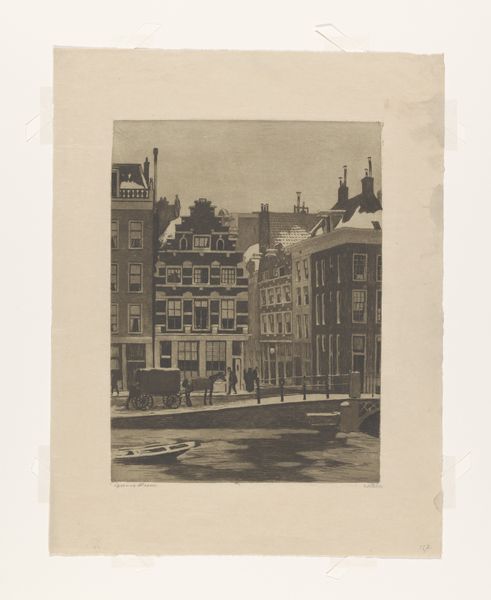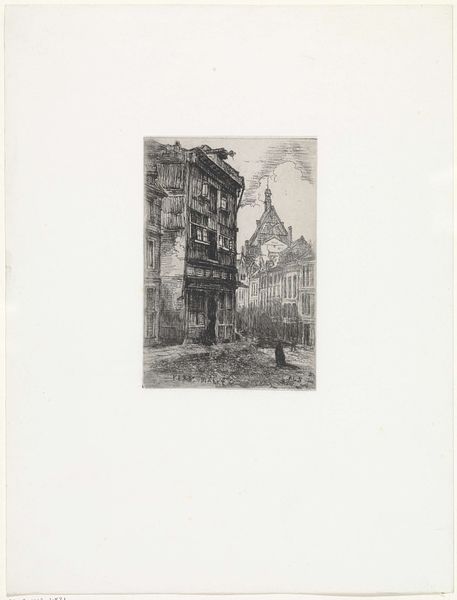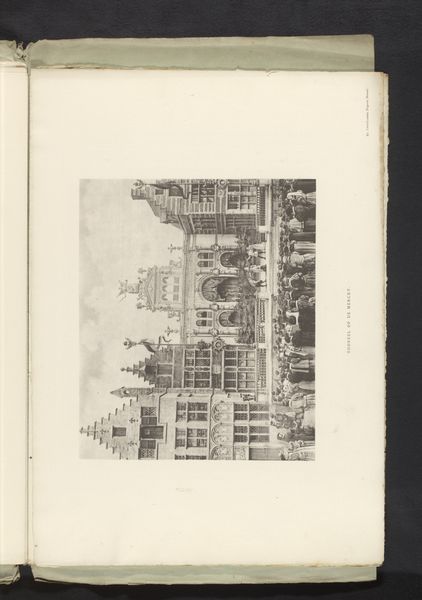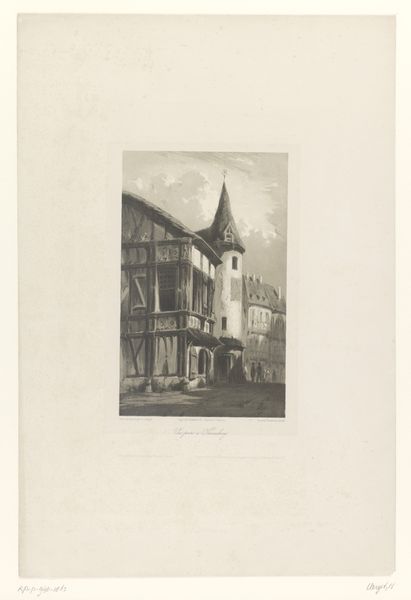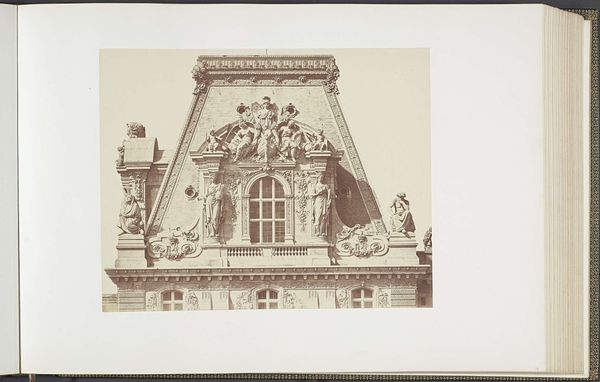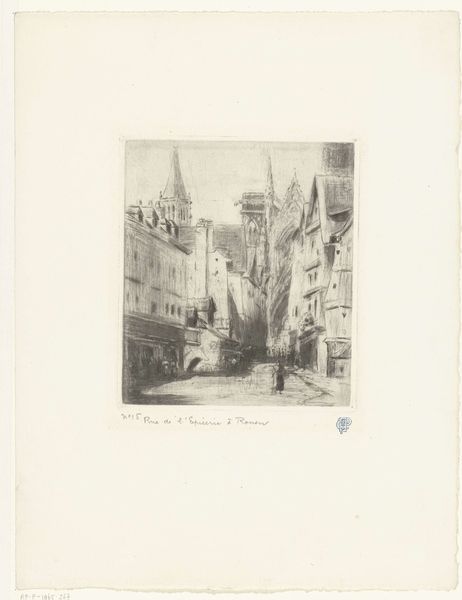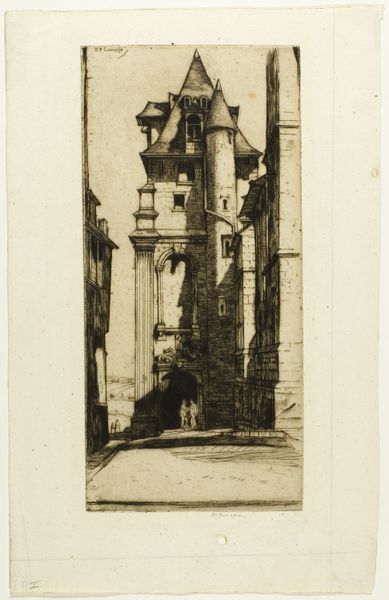
print, etching
#
dutch-golden-age
# print
#
etching
#
landscape
#
cityscape
#
realism
Dimensions: height 203 mm, width 143 mm
Copyright: Rijks Museum: Open Domain
Curator: Jan van der Heyden's print, "Huis aan de Herengracht," offers a fascinating glimpse into Amsterdam’s architectural elegance. It was likely created sometime between 1733 and 1936. The artist employed etching to render this cityscape. Editor: Immediately, I'm struck by the print’s tonal balance. The crisp geometry of the building juxtaposed with the flowing branches overhead is quite arresting. It has a certain intimacy despite portraying a grand canal house. Curator: Intimacy is a curious word choice, given the very public nature of the setting! But I understand. Heyden has always been preoccupied with how institutional architecture can project social standing, in the frame of an idealized domesticity and realism characteristic of Dutch Golden Age art. Editor: Agreed, there's that formal balance you note, the facade acting almost as a stage set. Semiotically, we could analyze how this public face creates symbolic meaning. Consider how light reflects to highlight specific elements, guiding the eye through constructed lines. Curator: Exactly! Consider too, the presence of those human figures along the canal's edge. How do their relatively smaller scale enhance our perception of the architectural mass? The composition encourages an exercise in both micro- and macro- analysis; we study the social actors to deduce something greater of that city, its role within the landscape. Editor: It is all staged and structured with that classical Golden Age feel, while hinting to that very real life taking place on Amsterdam's famed waterways, I still wonder about those loose date estimations. A broad, multi-century era could have wildly different interpretations based on period alone. Curator: And I ponder about what might cause Van der Heyden to choose this angle and capture what is shown, to the precise geometry used throughout the piece, or the materials and medium used as key focal points and decision elements within its production. Editor: The building takes my gaze for longer than the figures, though. But each approach offers an equal share of interpretations and wonder about Amsterdam's past and legacy.
Comments
No comments
Be the first to comment and join the conversation on the ultimate creative platform.
